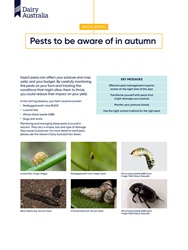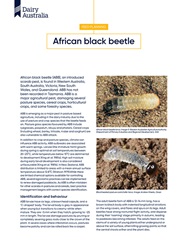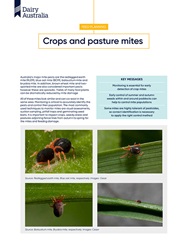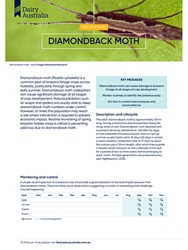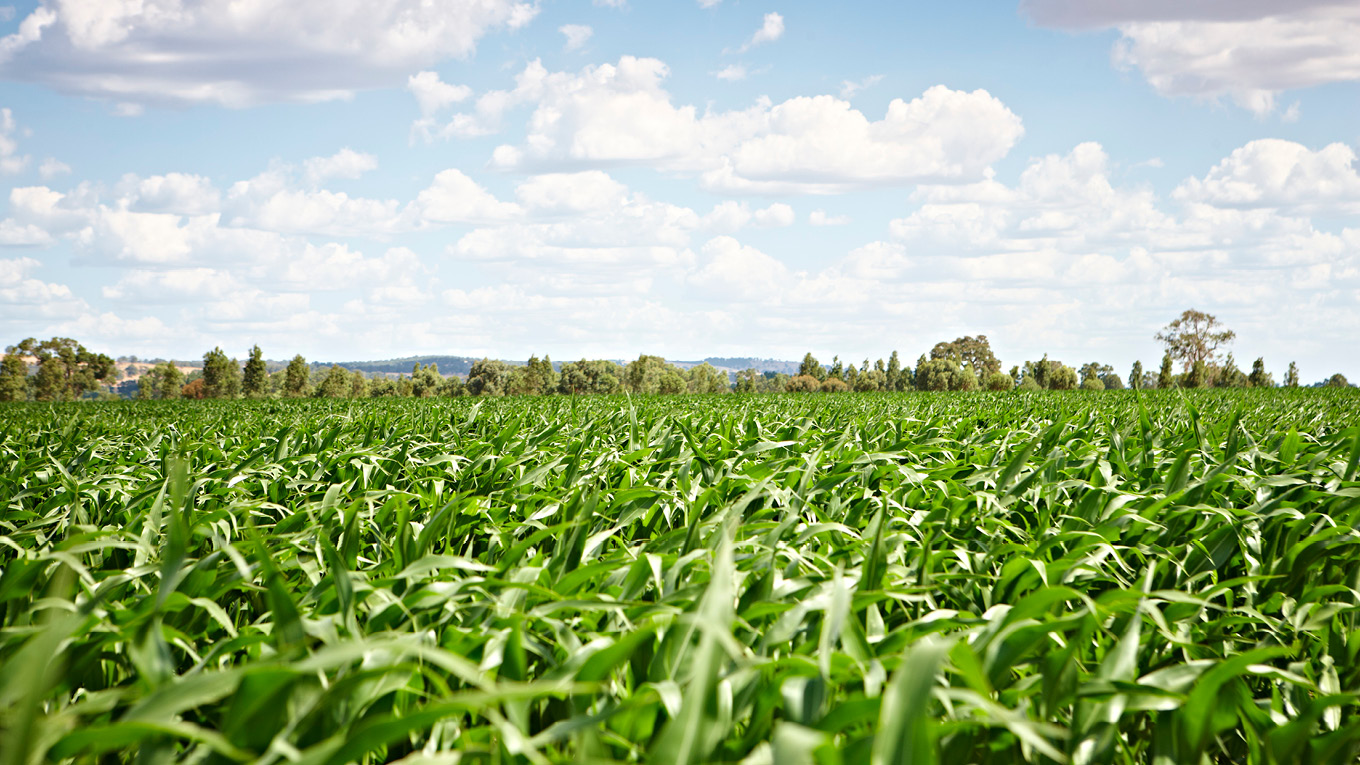Pests
Insect pests can affect pasture and crop yield and therefore dairy farmers' budgets. Careful monitoring of pests and the conditions which might allow them to thrive can help to reduce their impact on pasture and crop yield.
Key pests to monitor for include:
- Redlegged earth mite (RLEM)
- Lucerne flea
- African black beetle
- Slugs and snails
The first step to managing pests is to correctly identify them. Incorrectly identifying pests can result in damage to plants, wasted pesticides and the loss of beneficial insects.
Once identified, specific management strategies can be applied to avoid economic losses.
Management strategies that may help decrease pest pressure on-farm include weed and grazing management, rotating crops, control sprays and endophytes.
Dairy Australia's Pests to be aware of in autumn fact sheet contains a number of key messages, including:
- Effective pest management requires action at the right time of the year
- Knowing the pests that might damage pasture
- Monitor pasture closely
- Use the right control method for the right pest
African black beetle
African black beetles are a major agricultural pest.
Found in Western Australia, South Australia, Victoria, New South Wales and Queensland, these pests damage several pasture species, cereal crops, horticultural crops and some forestry species.
African black beetle is easily mistaken for other pests, including the red-headed pasture cockchafer, the black-headed pasture cockchafer and yellow-headed cockchafers. These common cockchafer pests share features with the African black beetle that are only discernible to a trained eye or when comparing species side-by-side.
Nevertheless, they can be distinguished from these cockchafers by considering their behaviour, biology and physical attributes. Some of these include the damage caused at different stages in their lifecycle, feeding behaviour, plant host preference and physical attributes such as head capsule and anal opening.
With few effective African black beetle control options available, the focus needs to be on reducing the risk of damaging levels being reached by adopting a combination of strategies.
More information is available on Dairy Australia's African black beetle fact sheet.
African black beetle factsheet
Crop and pasture mites
Australia’s major mite pests are the redlegged earth mite (RLEM), blue oat mite (BOM), balaustium mite and bryobia mite. Brown wheat mite and two-spotted mite are also considered important pests.
All of these mites look similar and can co-exist in the same area. Monitoring is critical to accurately identify the pests and control populations.
The most commonly used techniques to monitor mites are visual assessments, suction sampling, pitfall traps and germinating seed baits. It is important to inspect crops from autumn to spring for the mites and feeding damage, weedy areas and pastures adjoining fence lines are the best places to inspect.
More information is available on Dairy Australia's Crop and pasture mites fact sheet.
Crop and Pasture Mites
Slugs and snails
Slugs and snails are particularly damaging at the early stages of crop establishment, affecting plant seeds (mainly legumes), seedlings and leaves.
Much less is known about slug and snail damage to established pasture and how they can limit pasture persistence. Pasture systems that depend on clover to increase milk yield and for nitrogen fixation might be affected by slugs.
Stages of monitoring and control strategies
- January to February: Assess stubble management options for slug and snail control
- March to April: Assess options for burning and/or baiting
- May to August: Assess options for baiting, especially along fence lines
More information is available on Dairy Australia's Slugs and snail fact sheet.
Slugs and snails factsheet
Diamondback moth
The diamondback moth (DBM) is a common pest of brassica forage crops across Australia, particularly through spring and early summer.
DBM caterpillars can cause significant damage at all stages of crop development. Natural predators such as wasps and spiders are usually able to keep DBM numbers under control.
However, DBM populations can sometimes reach a size where intervention is required to prevent economic impact. Routine monitoring of spring brassica fodder crops is critical in preventing yield loss due to DBM.
A simple visual inspection of a brassica crop will provide a good indication of the level of pest pressure from DBM. There are three visual observations suggesting a current or impending moth challenge may be happening:
- Flying moths
- Caterpillars
- Eggs
Depending on the stage and the number of insects and intervention might be required. Other factors such as beneficial insects and rainfall may decrease the number of caterpillars in the crop.
More information is available on Dairy Australia's Diamondback moth fact sheet.
